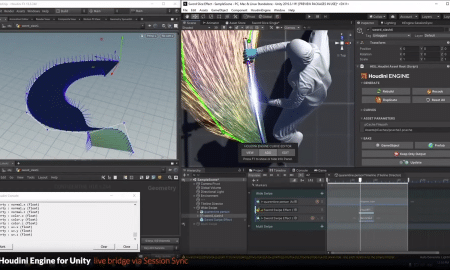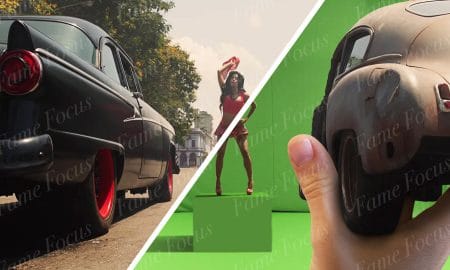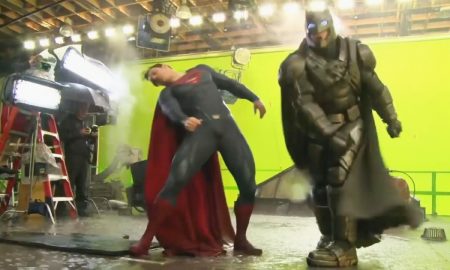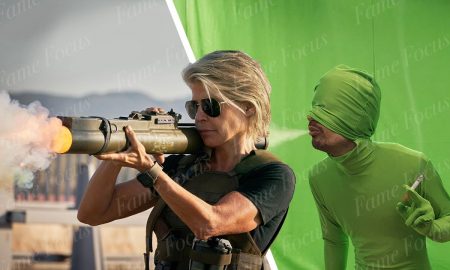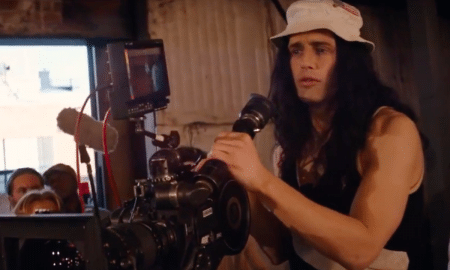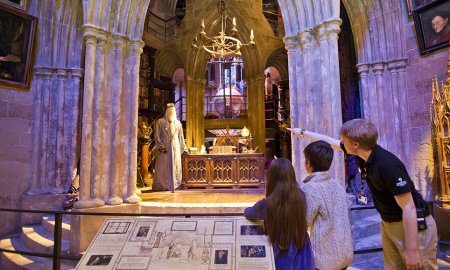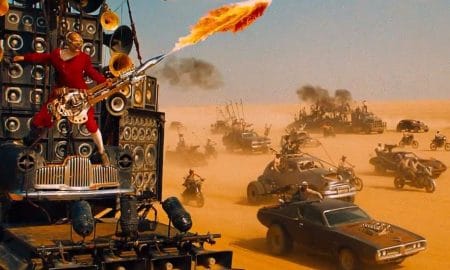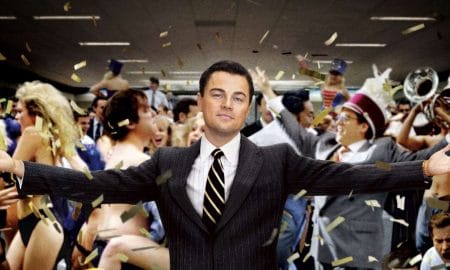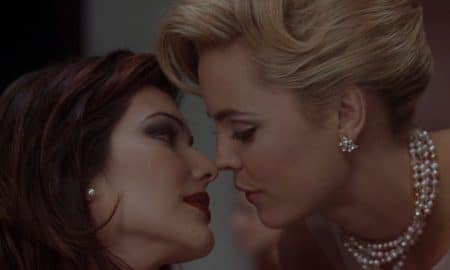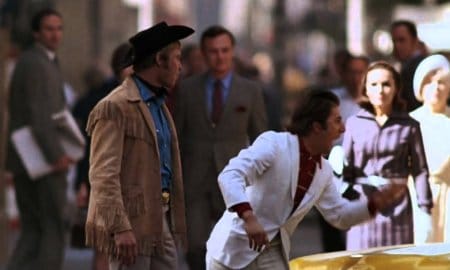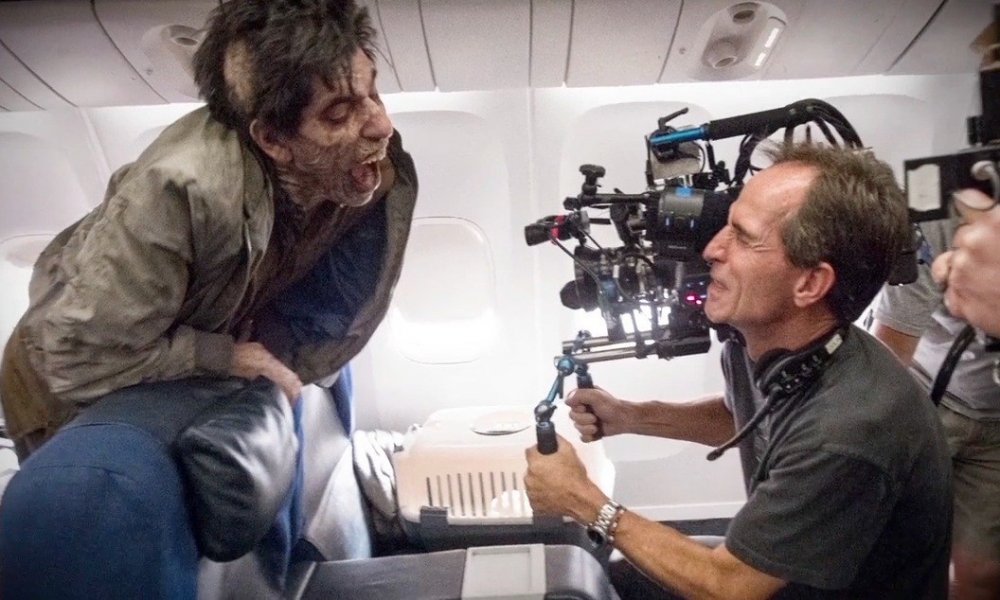

In 2013, the zombie action film World War Z was released starring Brad Pitt. The movie, which was based on a 2006 novel of the same name, brought moviegoers out to the theaters in droves. It was instantly deemed a commercial success, and it didn’t take long for it to be crowned the highest-grossing zombie film of all time. What makes this movie so captivating is the realistic visual effects created by computer graphics artists. This talented group of people worked around the clock to pull off one of the most believable apocalyptic films we’ve ever seen.
Now that the sequel has been delayed, we thought we’d take a look at what the original film looks like without all the snazzy the visual effects. Prepared to be amazed.
1. The Agents
There are hundreds of thousands of zombies in the film. They swarm the streets and climb on top of each other to build human towers. Nothing can stop them – not a bus, a plane, nor a helicopter. While watching the film, you probably wondered how they were able to get so many extras for many of these shots. But the truth is, most of the zombies are actually agents – digital bots that were created by visual effects artists. Up to 8,500 of these agents were used per scene, and over 24 different body types were digitally created using various textures to give each bot its own unique appearance.
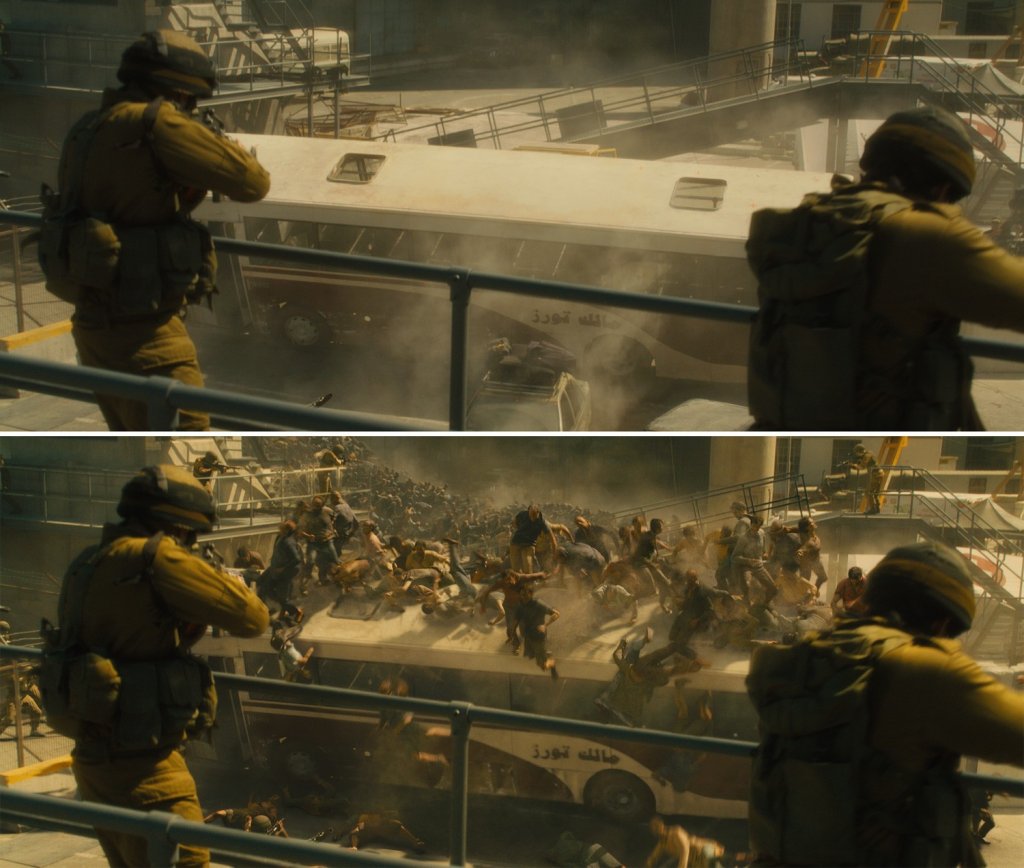
2. Massive Crowds
In June 2011, it was announced that visual effects company Cinesite Studios had been hired to work on a significant portion of the film. They were behind many of the aerial shots of Philadelphia with thousands of people running in streets as they were chased by zombies. These scenes were first filmed on a smaller scale, and then Cinesite would bulk up the real, on-set extras by adding 25,000 virtual bots to the crowd.
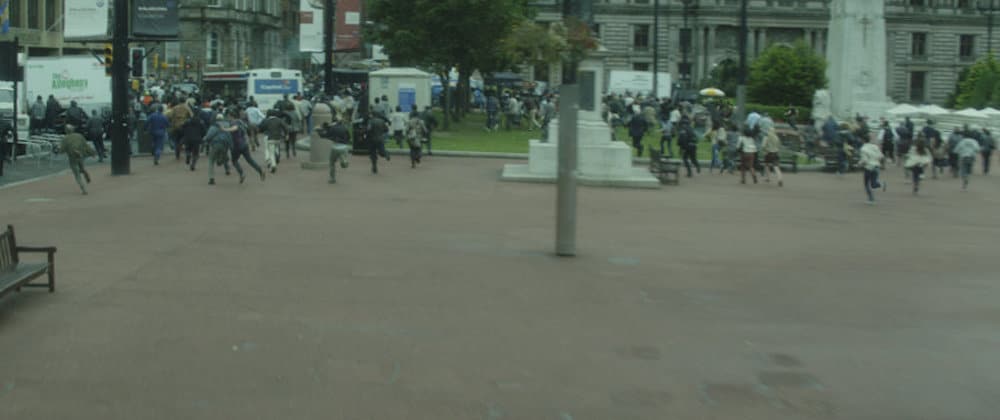
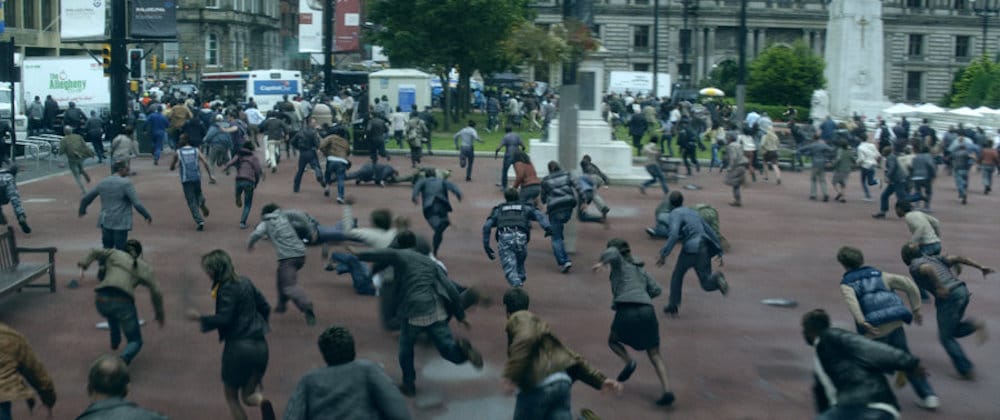
3. Helicopter Scene
In the film, Gerry Lane (Pitt) helps his family escape via helicopter from the top of a New Jersey apartment building. To execute this scene with the help of visual effects, the actors were filmed in front of a green screen on a soundstage. Later, visual effects artists created a virtual set and added the helicopter’s rotor blades and exhaust gas to make the scene look as real as possible.
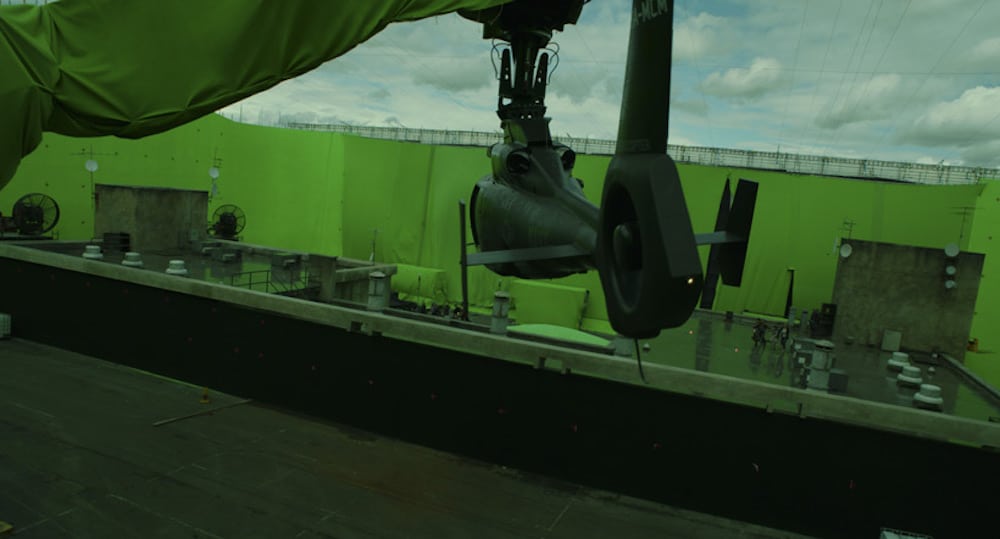
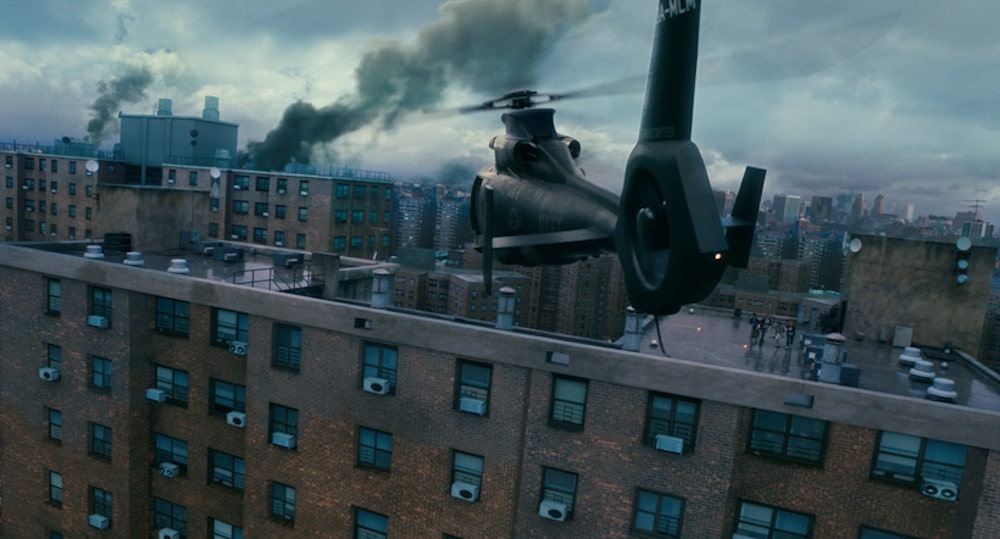
4. The City
Most of the ground scenes of Philadelphia were actually filmed in Glasgow, Scotland, and the aerial shots were created by the visual effects team. The structures and landmarks of the City of Brotherly Love were added to the layout of Glasgow so seamlessly, moviegoers can barely tell the difference.
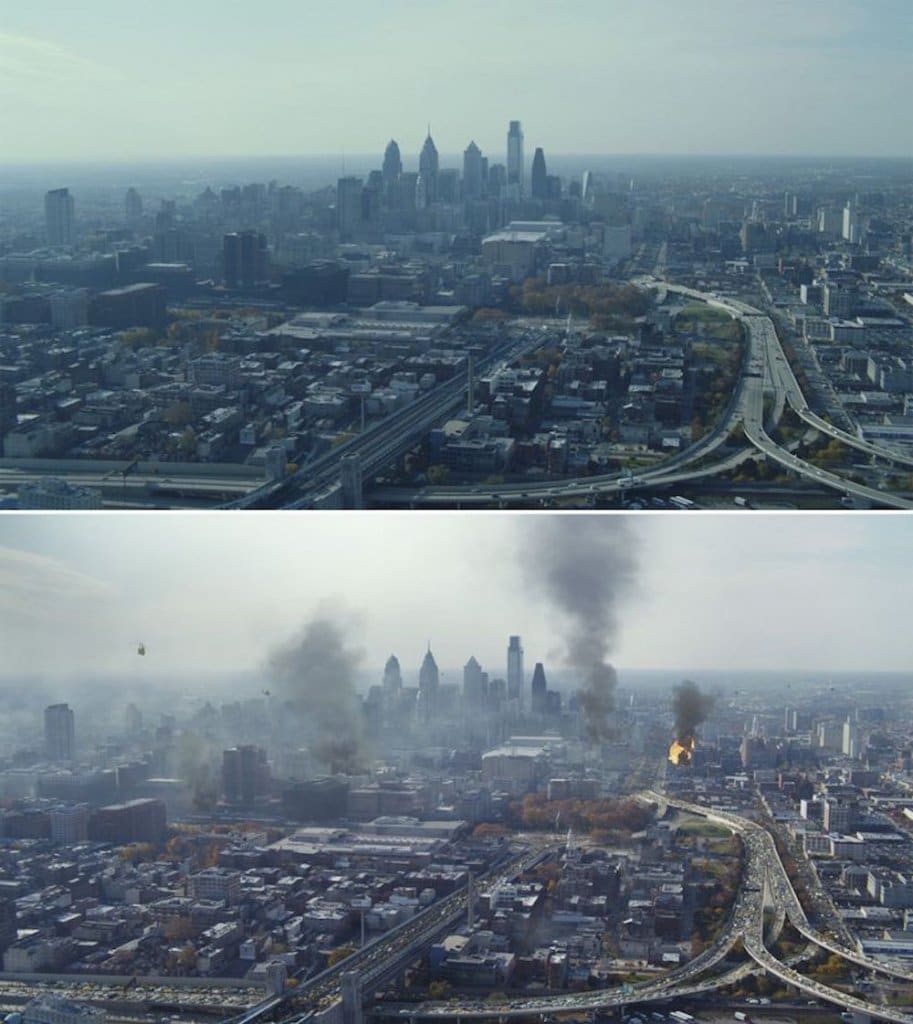
5. Jerusalem
This particular scene took place in Jerusalem, but it was actually filmed in Malta. After filming was completed in front of a green screen, a company called MPC was in charge of mixing in thousands of humans and zombies crawling over structures and running through the streets. Extras were photographed, and then those photos were scanned and used to build even larger crowds. The architecture from Jerusalem was then superimposed into the scene.
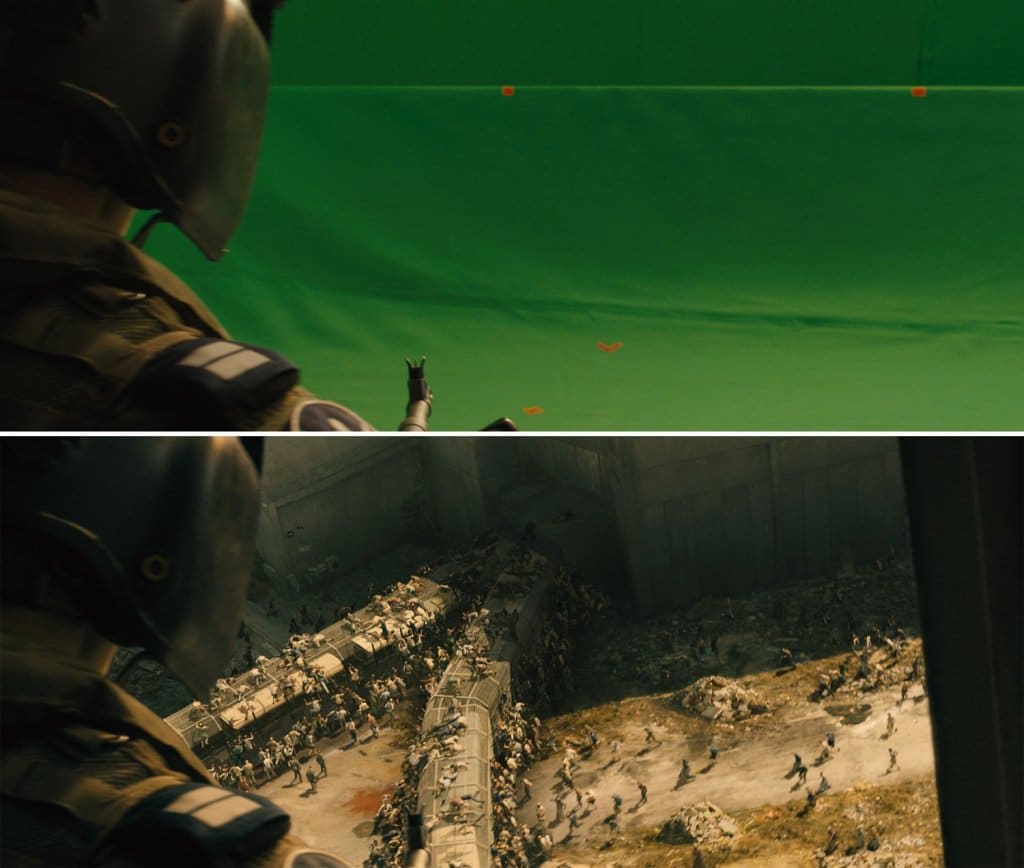
6. The Plane Destruction
One of the most action-packed scenes involves a plane crash. This scene was filmed inside a section of a plane, and green screens were set up outside of the windows. A few extras were inside the cabin, as well as Pitt who was instructed to throw a grenade before the plane “crashed into trees.”
Visual effects artists created the explosion, vapor, and debris using computer graphics, and the scene of the zombies getting sucked outside of the gaping hole in the aircraft was computer generated, as well. Mountains, trees, and the sky were then added outside of the windows by the company MPC.
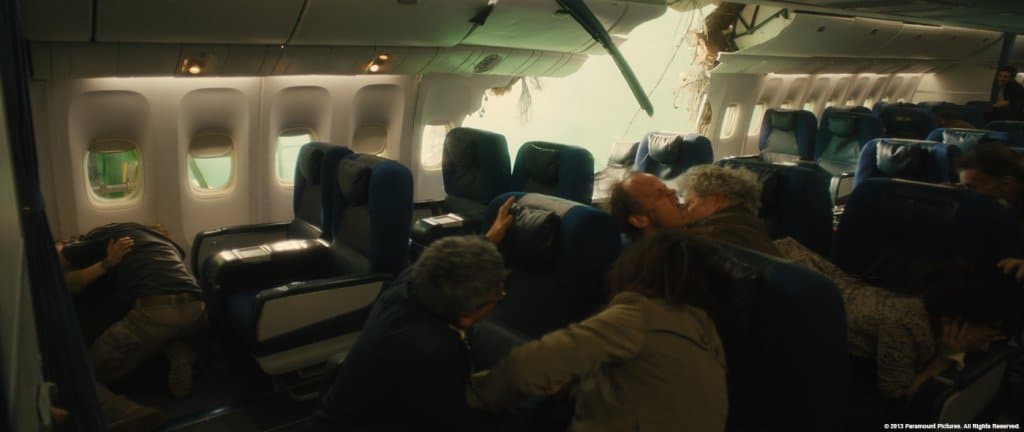
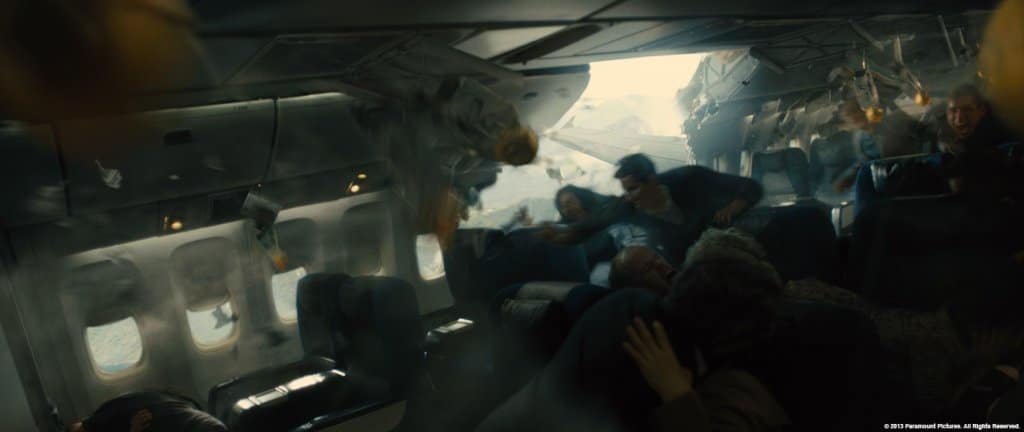
7. Helicopter Flying Over the City
This shot of another helicopter flying dangerously close to the city was created by the visual effects team at MPC. Photos of the helicopter were taken, and the graphic was later built using “texture variations.” They then worked together with the animation department to ensure the aircraft moved realistically while flying over the city.
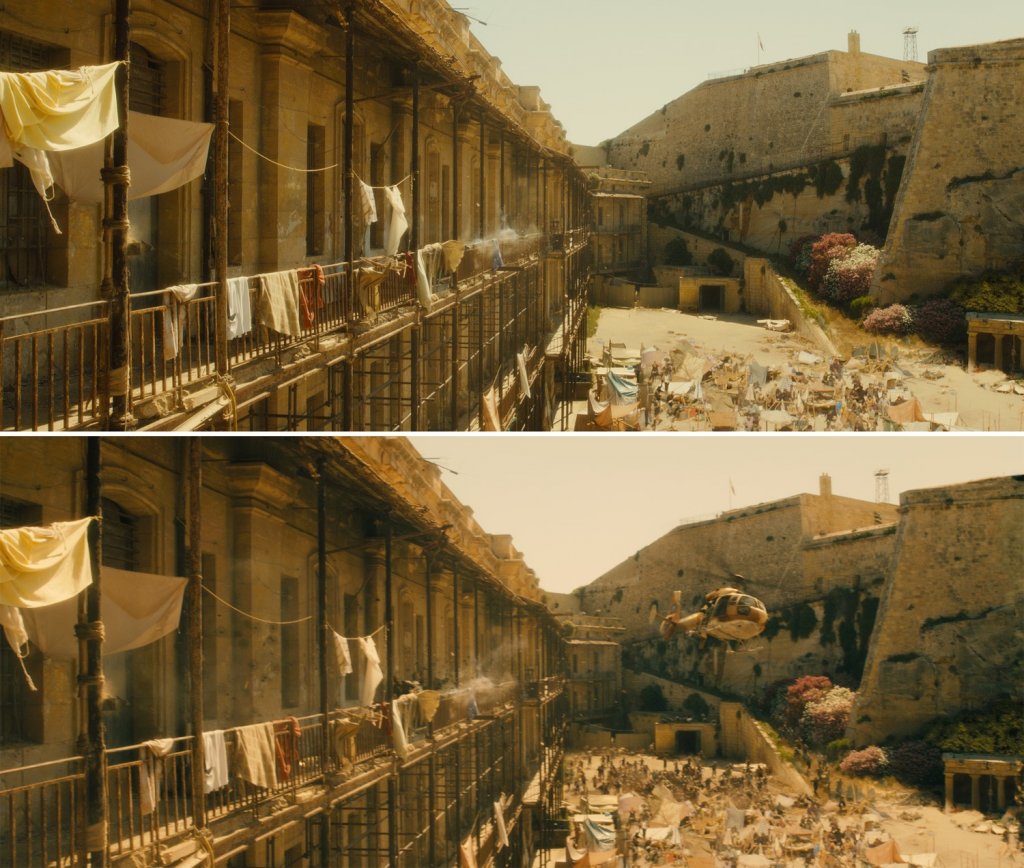
8. Crowd on the Runway
The top photo shows a few dozen people running in an isolated portion of an airport runway, and the bottom photo is what was seen in the movie after the magic of visual effects. Hordes of zombies were choreographed to run down the field, and even the planes on the runway and the one that is ascending into the sky were added to the scene afterward.
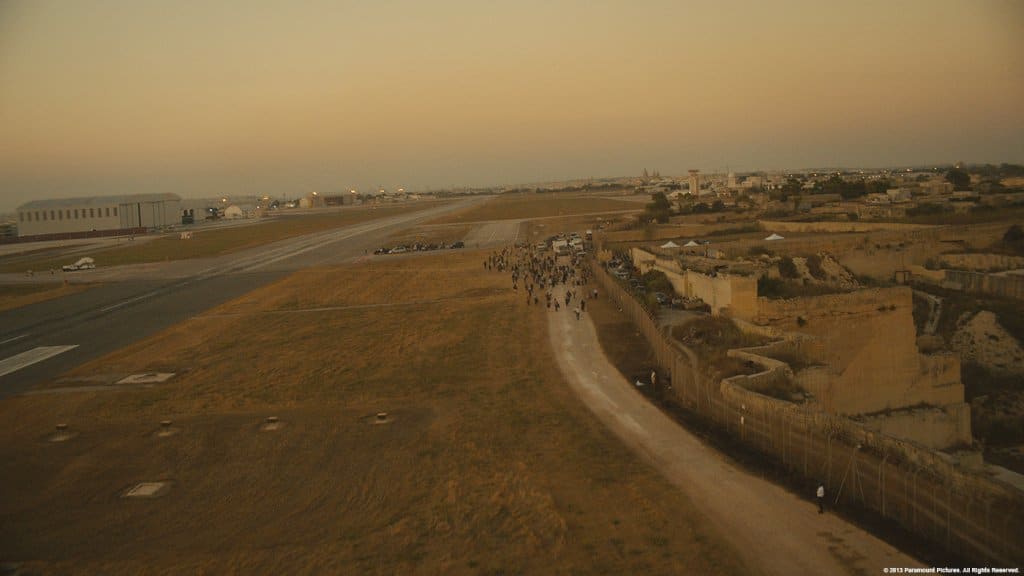
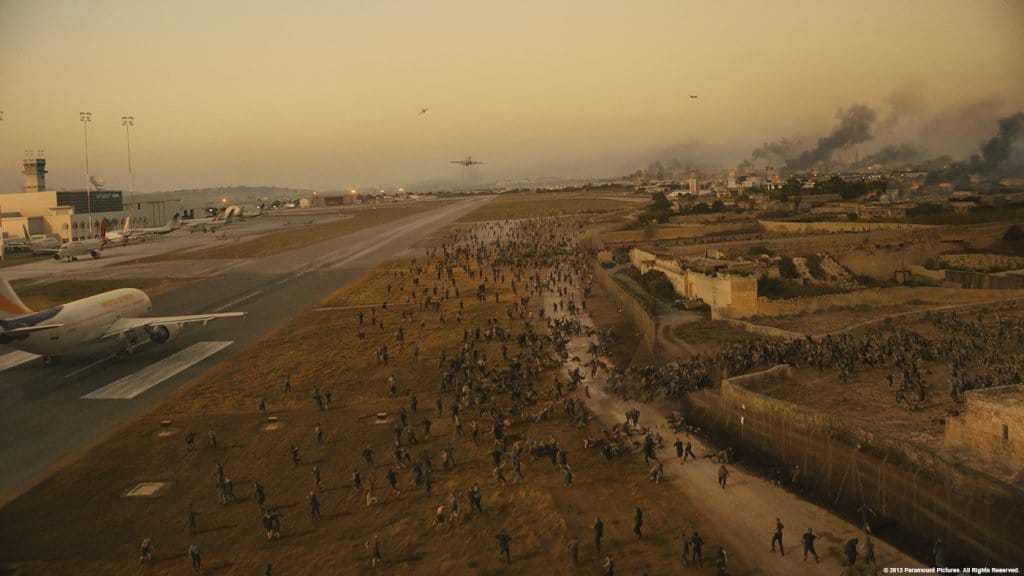
9. Individual Agents
MPC did an amazing job building unique humans and zombies that had many moviegoers fooled. Men, women, and children body types were used as templates for these characters. Various zombies were then built, from those with small blood stains to the ones with opened wounds and rotting teeth. The computer-generated people and zombies were also given their own unique CG clothing.
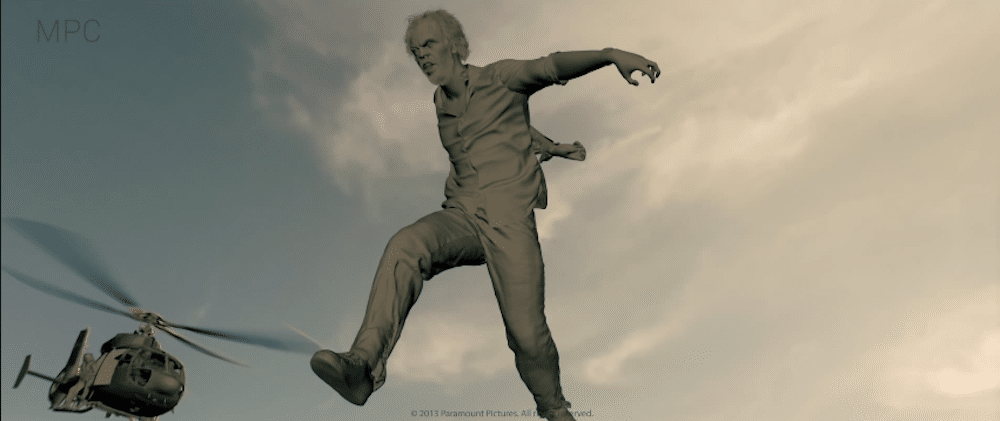
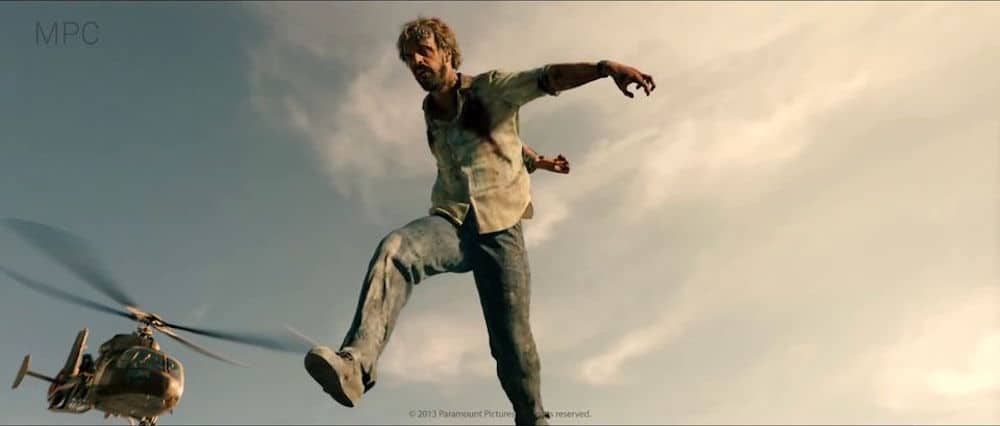
10. Zombies on the Rooftop
In this scene, the zombies looked like they were dangerously close to the rooftop ledge, but that wasn’t the case at all. The company Cinesite used the green screen footage of real-life actors and later generated the city’s buildings in the distance using visual effects.
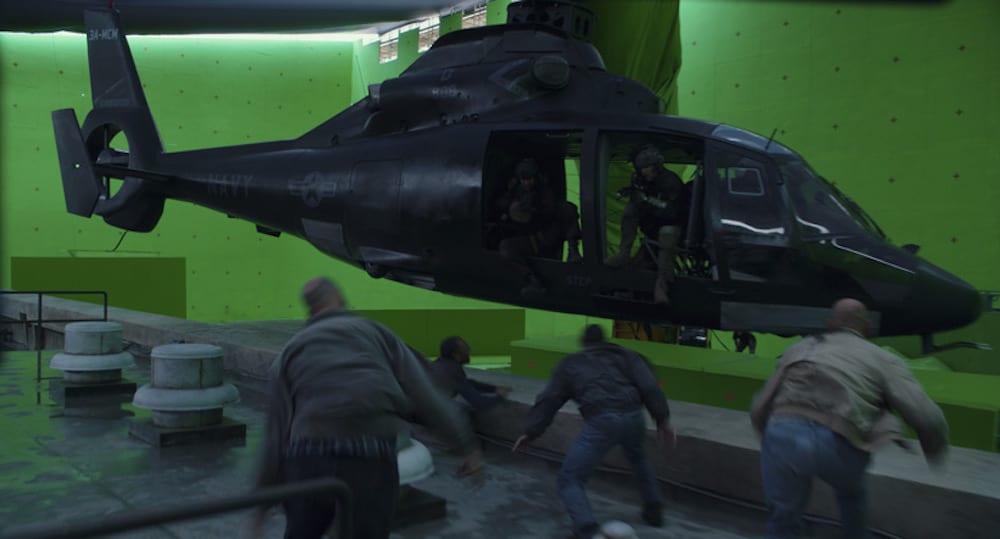
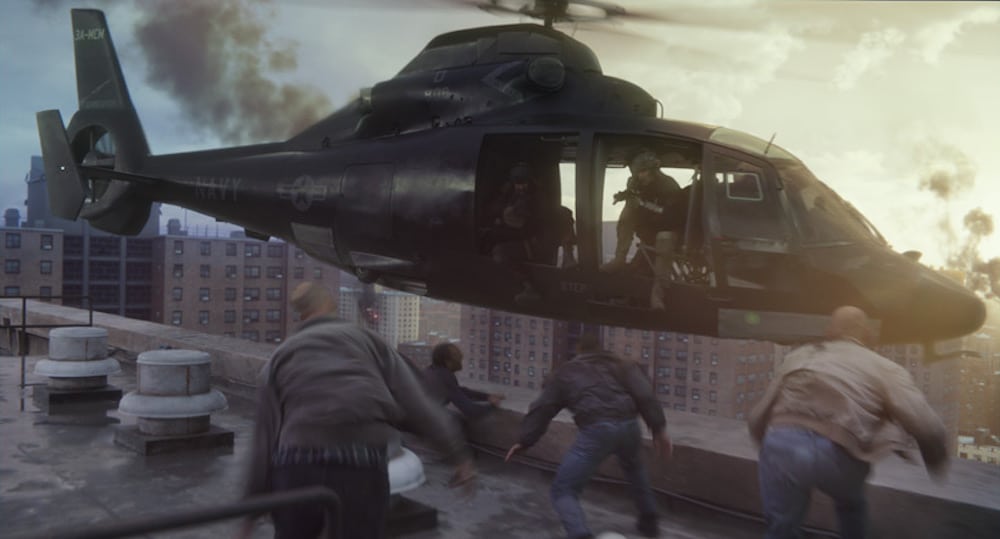
More in Movies
-
Amazing “Free Guy” VFX Breakdown
Whilst putting together our latest Breakdown of the VFX used in 20 Century Studio’s “Free Guy”, we interviewed Digital Domain’s VFX...
February 24, 2022 -
10 Reasons Why Practical Effects Are Better Than CGI
When Steven Spielberg recreated towering brachiosaurs using only computer wizardry for his 1993 classic Jurassic Park, computer-generated imagery (or CGI) skyrocketed...
July 13, 2018 -
12 Movies That Broke Impressive Worlds Records
Every year, more than 700 films are released in Hollywood. That number is steadily rising, which means that movies have to...
April 23, 2018 -
The 30 Sexiest Films of All Time
Love, sex, and passion are in the air whenever you watch one of the movies on our list. The displays of...
April 16, 2018 -
13 Surprising Facts About Marvel and Disney’s ‘Black Panther’
It only took a single Thursday evening in release to turn Disney’s newest superhero flick, Black Panther, into a bona fide...
March 9, 2018 -
12 Movie Bloopers That Accidentally Became Movie History
Unlike a lot of other art forms, filmmaking is a genuinely collaborative effort. There’s no such thing as complete control on...
February 2, 2018


